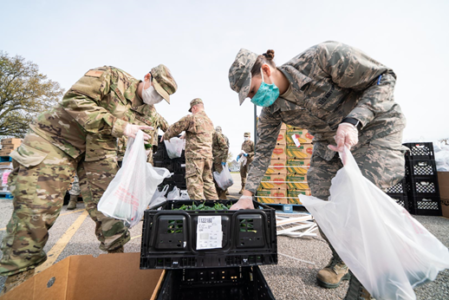For many active-duty military members, hunger is a reality. As many as 125,000 active-duty service members and their families experience food insecurity in the United States.
While we may not think the people who bravely defend our country face hunger, the unfortunate truth is that they often do. Below, we break down three facts you should know about hunger among military members.
Hunger may affect 125,000 active-duty service members *
Right now, as many as 125,000 active-duty service members and their families may be facing food insecurity. Service members often experience unique challenges that make them more likely to face hunger:
- Limited income: Some lower-ranking active-duty military members make less than $40,000 a year. With a lower income, it can be challenging to afford food at the end of the month, especially while supporting a family.
- High cost-of-living: Service members don’t necessarily get to choose where they are located, and with some bases located in cities with a very high cost-of-living, the salaries and housing benefits can be stretched thin.
- Financial commitments: For those with existing loan commitments, the money that’s leftover for food once monthly bills and payments are made can be small, leaving service members without enough to make ends meet.
Military spouses face barriers to consistent work *
Service members often are required to move from base to base, making it difficult for spouses to maintain consistent work. This can be especially challenging for family members with jobs that require special licensing which differs by state, like teachers, hairdressers, or nurses. This often leaves the family to rely on the single income of the service member.
Regardless of profession, supporting a family with only one income can be difficult, and being an active military member is often no different. With a family relying only on the military salary, especially when they are low ranking salaries, money can be very tight. One-third of students at Department of Defense schools—primary and secondary schools specifically for children of military personnel–were eligible for free and reduced-price meals during the 2018-2019 school year.
Few active-duty service members qualify for federal food assistance programs *
Even though many military members and their families face hunger, very few qualify for federal food assistance programs. When determining federal food assistance eligibility, housing allowances are considered income for service members, which is not the case for other groups receiving housing assistance. Only 2% of active-duty service members qualify for SNAP benefits, according to the USDA. But approximately 7% of military personnel experience food insecurity.
*Feeding America – June 2022

